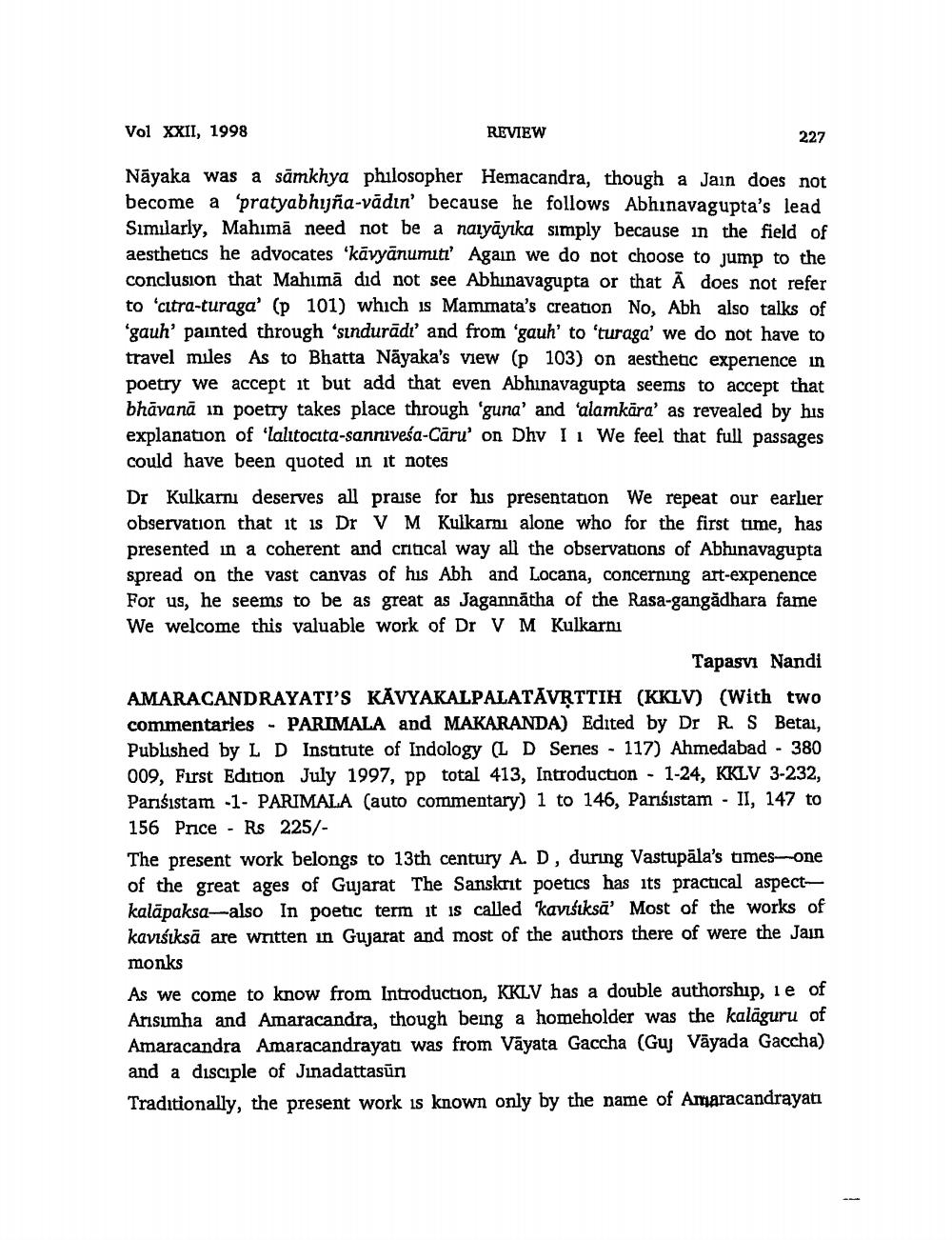________________
Vol XXII, 1998
REVIEW
227
Nāyaka was a sāmkhya philosopher Hemacandra, though a Jain does not become a 'pratyabhijña-vādın' because he follows Abhinavagupta's lead Similarly, Mahimā need not be a naiyāyika simply because in the field of aesthetics he advocates "kāvyānumiti' Again we do not choose to jump to the conclusion that Mahımā did not see Abhinavagupta or that Ā does not refer to 'citra-turaga' (
p 101) which is Mammata's creation No, Abh also talks of gauh' painted through 'sindurādı' and from 'gauh' to 'turaga' we do not have to travel miles As to Bhatta Näyaka's view (
p103) on aesthetic experience in poetry we accept it but add that even Abhinavagupta seems to accept that bhāvanā in poetry takes place through 'guna' and 'alamkära' as revealed by his explanation of 'lalıtocita-sanniveśa-Cāru' on Dhy I 1 We feel that full passages could have been quoted in it notes Dr Kulkarnı deserves all praise for his presentation We repeat our earlier observation that it is Dr V M Kulkarni alone who for the first time, has presented in a coherent and critical way all the observations of Abhinavagupta spread on the vast canvas of his Abh and Locana, concerning art-expenence For us, he seems to be as great as Jagannātha of the Rasa-gangădhara fame We welcome this valuable work of Dr V M Kulkarni
Tapasvi Nandi AMARACANDRAYATI'S KAVYAKALPALATĀVRTTIH (KKLV) (With two commentaries - PARIMALA and MAKARANDA) Edited by Dr RS Betai, Published by L D Institute of Indology (L D Series - 117) Ahmedabad - 380 009, First Edition July 1997, pp total 413, Introduction - 1-24, KKLV 3-232, Parsistam -1- PARIMALA (auto commentary) 1 to 146, Parisistam - II, 147 to 156 Price - Rs 225/The present work belongs to 13th century A. D, during Vastupāla's times-one of the great ages of Gujarat The Sanskrit poetics has its practical aspectkalāpaksa-also in poetic term it is called 'kavisiksā' Most of the works of kavisiksā are written in Gujarat and most of the authors there of were the Jain monks As we come to know from Introduction, KKLV has a double authorship, ie of Arisimha and Amaracandra, though being a homeholder was the kalāguru of Amaracandra Amaracandrayatı was from Vāyata Gaccha (Guy Vāyada Gaccha) and a disciple of Jinadattasun Traditionally, the present work is known only by the name of Amaracandrayatı




